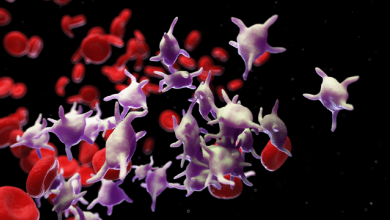Search results
Author(s):
Brian G Hynes
,
Thomas J Kiernan
,
Nicholas J Ruggiero
,
et al
Added:
3 years ago
Stroke-related morbidity and mortality remain unacceptably high. Recent estimates suggest that it accounts for approximately one out of every 17 deaths in the US, and that a person dies from the direct consequences of stroke every three to four minutes.1 Of the almost 800,000 strokes that occur annually, 87% are ischaemic, the remainder occurring predominantly as a consequence of intracerebral…
View more
Bionert Stent Angiographic Study
Author(s):
Eulogio García Fernandez
,
Didier Carrie
,
Amadeu Betriu
,
et al
Added:
3 years ago
Article
Author(s):
Stefan Stortecky
,
Stephan Windecker
Added:
3 years ago
Cerebrovascular events are associated with high rates of morbidity and mortality and are considered the global second leading cause of death.1 The majority of strokes are ischemic, although the etiology remains unknown in a considerable number of patients,2 commonly referred to as “non-defined” or “cryptogenic.”3 Data from epidemiologic studies point towards a relevant association between the…
View more
Author(s):
Azfar Zaman
,
Bernard Prendergast
,
David Hildick-Smith
,
et al
Added:
1 year ago
Author(s):
Timm Bauer
,
Christian Hamm
Added:
3 years ago
Introduction
Antiplatelet therapy is a cornerstone in coronary artery disease (CAD) management. Acetylsalicyclic acid (ASA) has been known for many decades to have antithrombotic efficacy. Already in the 1980’s, the ISIS-2 study demonstrated that ASA reduces mortality in acute myocardial infarction (AMI) by 23 %.1 ASA leads to irreversible inactivation of cyclooxygenase 1 and thereby blocks the…
View more
Stroke Prophylaxis by Percutaneous Closure of Patent Foramen Ovale and Left Atrial Appendage
Author(s):
Antonio L Bartorelli
,
Claudio Tondo
Added:
3 years ago
Article
Author(s):
Paul Guedeney
,
Birgit Vogel
,
Roxana Mehran
Added:
3 years ago
Dual antiplatelet therapy (DAPT) including aspirin and a P2Y12 inhibitor is the current gold standard for the treatment and mid-term secondary prevention of acute coronary syndrome (ACS).1–4 However, despite the use of potent P2Y12 inhibitors such as ticagrelor or prasugrel, patients remain at high ischaemic risk after ACS. More specifically, in the prasugrel treatment arm of the TRial to Assess…
View more
Author(s):
Stuart J Head
,
Ad JJC Bogers
,
A Pieter Kappetein
Added:
3 years ago
Valvular Heart Surgery
The field of cardiac surgery is urgently in need of new anticoagulant agents. Approximately 300,000 prosthetic valves are implanted yearly, after which lifelong anticoagulation therapy is mandatory as thromboprophylaxis. To date, vitamin K antagonists (VKAs), such as warfarin, remain the only licensed agents to prevent mechanical valve-induced thromboembolic events but…
View more
Anticoagulation after TAVI
Author(s):
Antonio Greco
,
Davide Capodanno
Added:
3 years ago
Article
Author(s):
Gabriele Pesarini
,
Sara Ariotti
,
Flavio Ribichini
Added:
3 years ago
Haemostasis is a complex phenomenon defined as the chain of mechanisms able to maintain the integrity of a closed, high-pressure circulatory system after vascular damage.1 Thrombogenesis represents the main process assuring haemostasis at each level of the vascular system, and its accurate regulation guarantees the correct balance between blood flow and damage repair. An uncontrolled thrombin…
View more












